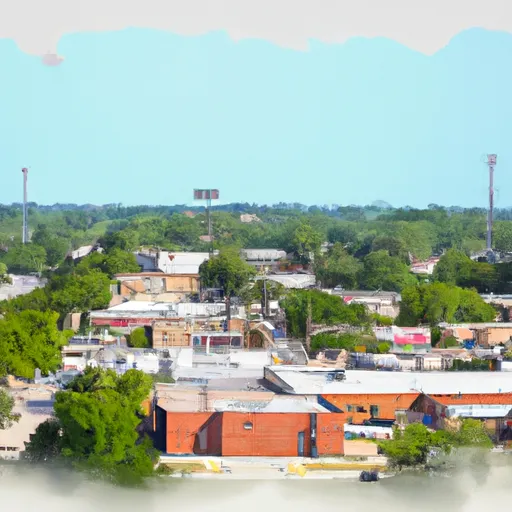-
 Snoflo Premium
Snoflo Premium
Get unlimited access to all our content
With no Ad interruptions! - Start Your Free Trial Login with existing account
Winters
Eden Index
Climate
8.0
•
Recreation
0.3
•
Community
1.8
•
Safeguard
3.8/10

Winters, Texas is a small town located in Runnels County, in the central part of the state. The town experiences a subtropical climate, characterized by hot summers and mild winters. Summers are typically hot and dry, with temperatures often exceeding 90°F (32°C). Winters are generally mild, with temperatures ranging from the low 40s°F (4°C) to the mid-60s°F (16°C). Precipitation is evenly distributed throughout the year, with an average of 25 inches (64 cm) annually.
In terms of hydrology constituents, Winters is situated near the Colorado River and is surrounded by several creeks and small rivers. These water sources provide opportunities for fishing and canoeing. Additionally, the area is known for its numerous springs and natural pools, offering swimming and recreational activities during the warmer months.
Outdoor recreation opportunities in Winters include exploring the nearby O.H. Ivie Reservoir, which covers approximately 19,000 acres and provides excellent fishing opportunities for largemouth bass, catfish, and crappie. Hunting is also popular in the area, with opportunities for deer, quail, turkey, and dove hunting. Nature enthusiasts can enjoy bird watching and wildlife photography in the local parks and natural areas.
Overall, Winters, Texas offers a pleasant climate, diverse hydrology constituents, and various outdoor recreation opportunities for residents and visitors alike.
What is the Eden Index?
The Snoflo Eden Index serves as a comprehensive rating system for regions, evaluating their desirability through a holistic assessment of climate health, outdoor recreation opportunities, and natural disaster risk, acknowledging the profound impact of these factors on livability and well-being.
Climate Health Indicator (CHI): 8.0
Winters receives approximately
617mm of rain per year,
with humidity levels near 89%
and air temperatures averaging around
18°C.
Winters has a plant hardyness factor of
8, meaning
plants and agriculture in this region tend to thrive here all year round.
By considering the ideal temperature range, reliable water supplies, clean air, and stable seasonal rain or snowpacks, the Climate Health Indicator (CHI) underscores the significance of a healthy climate as the foundation for quality living.
A healthy climate is paramount for ensuring a high quality of life and livability in a region, fostering both physical well-being and environmental harmony. This can be characterized by ideal temperatures, reliable access to water supplies, clean air, and consistent seasonal rain or snowpacks.
Weather Forecast
Streamflow Conditions
Middle Colorado-Concho
Area Rivers
Middle Colorado-Concho
Snowpack Depths
Middle Colorado-Concho
Reservoir Storage Capacity
Middle Colorado-Concho
Groundwater Levels
Recreational Opportunity Index (ROI): 0.3
The Recreational Opportunity Index (ROI) recognizes the value of outdoor recreational options, such as parks, hiking trails, camping sites, and fishing spots, while acknowledging that climate plays a pivotal role in ensuring the comfort and consistency of these experiences.
Access to outdoor recreational opportunities, encompassing activities such as parks, hiking, camping, and fishing, is crucial for overall well-being, and the climate plays a pivotal role in enabling and enhancing these experiences, ensuring that individuals can engage in nature-based activities comfortably and consistently.
Camping Areas
| Campground | Campsites | Reservations | Toilets | Showers | Elevation |
|---|---|---|---|---|---|
| Hamlin City Park | None | 1,716 ft | |||
| Ballinger City Park | 8 | 1,624 ft | |||
| Dyess Military - Dyess AFB | 30 | 1,752 ft | |||
| Stock Pen Crossing RV Park - Menard | None | 1,884 ft | |||
| Ballinger Lake Park | 22 | 1,681 ft | |||
| Concho Park - O.H. Ivie Reservoir | None | 1,578 ft | |||
| W. Lee Colburn Park | 14 | 1,814 ft | |||
| Haskell City Park | 10 | 1,575 ft | |||
| South Park - Hamlin | None | 1,765 ft | |||
| Abilene State Park | 84 | 1,986 ft |
Nearby Fishing
Nearby Ski Areas
Catastrophe Safeguard Index (CSI):
The Catastrophe Safeguard Index (CSI) recognizes that natural disaster risk, encompassing floods, fires, hurricanes, and tornadoes, can drastically affect safety and the overall appeal of an area.
The level of natural disaster risk in a region significantly affects safety and the overall livability, with climate change amplifying these risks by potentially increasing the frequency and intensity of events like floods, fires, hurricanes, and tornadoes, thereby posing substantial challenges to community resilience and well-being.
Community Resilience Indicator (CRI): 1.8
The Community Resilience Indicator (CRI) recognizes that education, healthcare, and socioeconomics are crucial to the well-being of a region. The CRI acknowledges the profound impact of these elements on residents' overall quality of life. By evaluating educational resources, healthcare accessibility, and economic inclusivity, the index captures the essential aspects that contribute to a thriving community, fostering resident satisfaction, equity, and social cohesion.

